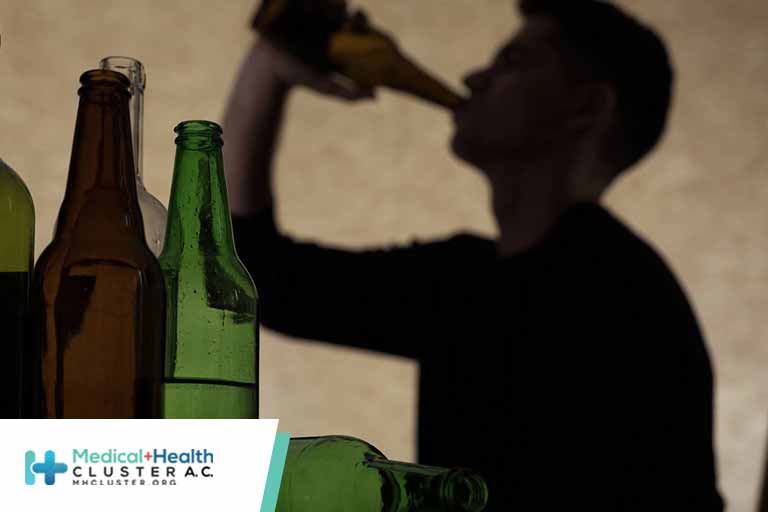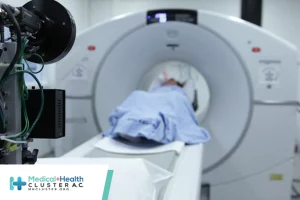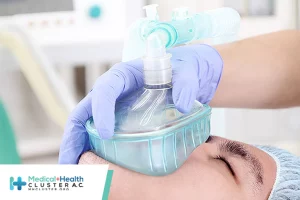La Organización Mundial de la Salud confirma cómo se propagan...
Leer más
The Alcohol Pandemic: Are We Ready for What’s Next?

Over the past year, working from home changed to homing from work. This made life infinitely more stressful for those juggling work with running a household, while additionally burdened by being cut off from many personal connections. These living conditions are also ripe for alcohol abuse, leaving us to question, has drinking become the new American pastime?
Troubling Trends
The 2015-2020 Dietary Guidelines for Americans recommend that adults drink in moderation by limiting daily intake to two drinks or less for men and one drink or less for women. This seems reasonable, but do Americans know what is considered a “drink”?
The guidelines state that one drink can be 12 oz of 5% alcohol by volume (ABV) beer, 5 oz of 12% ABV wine, or 1.5 oz of 40% ABV liquor. However, that one bottle of wine enjoyed at home in the evening is 25 oz, which equals five drinks, well above the current recommendations. Although most Americans do not drink alcohol daily, clinicians need to pay attention to the amount that our patients consume when they do.
The need to be vigilant has becoming increasingly clear over the past year.
A 2020 survey study showed an increase of alcohol intake during the pandemic, with 1 day more of consumption per month by 75% of American adults. Women increased their alcohol intake by 39% compared with 2019. Younger women in particular are driving the higher mortality rates for alcoholic liver disease.
These trends are even more problematic when coupled with data on Americans’ diets during the pandemic.
A recent Gallup poll revealed that 28% more Americans reported that they weighed 200 lb or more this decade compared with the previous decade. The average weight reported was 178 lb, up from 174 lb. Despite this trend, fewer Americans are looking to lose weight and are content with their current weight.
By 2030, it is projected that most Americans will be overweight, and of those, nearly 50% of adults will have obesity. It is also estimated that 33% of children between 6 and 11 years of age and 50% of adolescents between 12 and 19 years of age will be overweight or obese.
The Synergistic Effects of Alcohol and Obesity
We know that alcohol consumption can cause damage to the liver, heart, and pancreas and is linked to several types of cancers. It can also weaken the immune system or worsen depression and anxiety, side effects that no one wants to experience, especially during a pandemic. Mortality from alcohol-related disease increased 40% from 1999 to 2017 and over 150% for people between 25 and 34 years of age.
Studies show that obesity decreases our lifespan by up to 8 years and is associated with at least 236 other medical problems, including 13 types of cancer, type 2 diabetes, sleep apnea, hypertension, hyperlipidemia, and depression. In addition, death rates in midlife (age 25-64 years) increased by 114% between 1999 and 2017 owing to obesity.
The synergistic effect of heavy alcohol use and obesity can increase the risk for fibrosis progression, hepatic carcinogenesis, and mortality. Heavy drinkers with obesity have a 5.8-fold relative risk for steatosis compared with heavy drinkers with normal body weight. Rates of liver disease-related mortality are approximately 19 in obese men who drink more than 15 alcoholic drinks per week, compared with only 3 for underweight/normal weight men. There is a fivefold increase in risk for cirrhosis in women with obesity who drink more than 150 g of alcohol weekly.
Identifying At-Risk Patients
As the need to identify advanced liver disease has become increasingly important in recent years, it has also, thankfully, become easier for clinicians to do. The most important factor in understanding risk for liver-related complications is the presence of fibrosis.
Noninvasive assessment using clinical calculators or imaging can determine risk for advanced fibrosis and cirrhosis.
Fibrosis-4 (FIB-4) calculation inputs age, alanine aminotransferase (ALT) level, aspartate aminotransferase (AST) level, and platelet count to determine risk. A FIB-4 score < 1.45 has a negative predictive value of 90% for advanced fibrosis, whereas a score > 3.25 would have a 97% specificity and a positive predictive value of 65%.
The AST to Platelet Ratio Index (APRI) calculator uses ALT level, AST level, and platelet count. An APRI score > 1.0 has a sensitivity of 76% and specificity of 72% for predicting cirrhosis and > 0.7 has a sensitivity of 77% and specificity of 72% for predicting significant hepatic fibrosis.
Newer imaging techniques are also reliable and accurate, including ultrasound in the form of transient elastography and point shear wave elastography, acoustic radiation force impulse imaging, or dynamic shear wave elastography.
Guidelines advise assessing for the presence of fibrosis in individuals with either nonalcoholic fatty liver disease or alcohol use disorder.
Differentiating Alcohol Use From Alcohol Abuse
As medical professionals, what needs to change in our conversations with patients? First and foremost is our approach.
Do not ask your patients whether they drink or not; otherwise, they may instinctively say no. Even when they are open about their drinking, patients are likely to underestimate the extent of their consumption.
Using the CAGE questions (need to Cut down, Annoyed by criticism of alcohol use, feeling Guilty, and Eye opener in the morning), reviewing details of type of alcohol and specific amount, and getting blood work with complete blood cell count and comprehensive panel are all interventions that will help with risk stratification for alcoholic use disorder.
Alcohol use disorder is defined in the latest edition of the Diagnostic and Statistical Manual of Mental Disorders as a maladaptive pattern of substance use leading to clinically significant impairment or distress manifested by two or more issues occurring in a 12-month period. This can include ingesting large amounts of alcohol; unable to decrease alcohol use; having alcohol cravings; or failure in occupation, social, or interpersonal obligations from alcohol use.
Changing Treatments for Severe Alcohol Use
Linking a patient with alcohol use disorder to appropriate interventions was difficult even before the pandemic. With resulting disruptions to preventive care, additional services were forced to adjust. Virtual visits can help with follow-up for counseling and behavioral modifications. Support groups, such as Alcoholic Anonymous, have transitioned to virtual group meetings.
Acute alcoholic hepatitis is associated with excessive short-term mortality risk of up to 40% within the first month of presentation, which has led to changing attitudes on when to intervene. Transplant centers previously required a minimum of 6 months of abstinence before considering the patient for evaluation. However, more data have become available on the benefits and safety of early liver transplantation for patients with severe alcoholic hepatitis. When comparing alcoholic cirrhosis vs alcoholic hepatitis, the rates of graft and patient survival at 5 years were similar (75% and 73%, respectively). Patient survival with early liver transplantation for alcoholic hepatitis has been reported to be 94% at 1 year and 84% at 3 years.
Although effective medical treatments are lacking and the number of organ donations is limited, there are many clinical trials of novel agents for alcoholic hepatitis. The mechanism of actions of these drugs are very diverse and encompass targeting gut microbiota, inflammatory and cytokine signaling, oxidative stress, and regenerative capacity. There is hope for effective and safe treatment options for severe alcoholic hepatitis in the future.
Alcoholic use disorder is increasing, and this is especially problematic for individuals with overweight or obesity. Alcohol is now a major cause of mortality, with particular concerns in women. Changing these troubling trends requires recognition, starting with a neutral conversation about alcohol use. In those with problematic drinking, a fibrosis assessment and the linkage to addiction treatment can be lifesaving.
Créditos: Comité científico Covid




